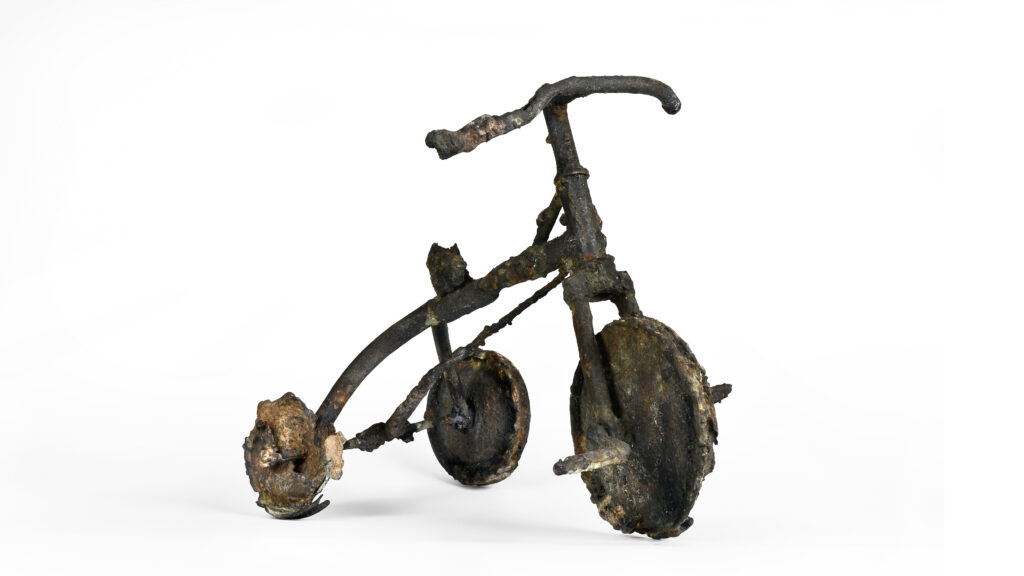“Future Memory – Tricycle” is an artwork by Akira Fujimoto and Cannon Hersey. The work was commissioned to commemorate the realization of the Treaty on the Prohibition of Nuclear Weapons (TPNW) by ICAN and former Director and Nobel Peace Prize winner Beatrice Fihn in 2020. “Future Memory – Tricycle” was donated by ICAN to the City of Geneva and exhibited as permanent collection of the Red Cross Museum in Geneva since September 19th, 2024.
「Future Memory – Tricycle」は、藤元明とキャノン・ハーシーによるアート作品である。2021年、ICAN (核兵器廃絶国際キャンペーン)前事務局長ベアトリス・フィンの呼びかけにより、核兵器禁止条約の実現を記念し、広島平和記念資料館で展示されている「伸一ちゃんの三輪車」をモチーフに、ブロンズ彫刻として制作された。「Future Memory – Tricycle」は、ICANからジュネーブ市に寄贈され、2024年9月からジュネーブの赤十字博物館に収蔵、恒久展示されている。
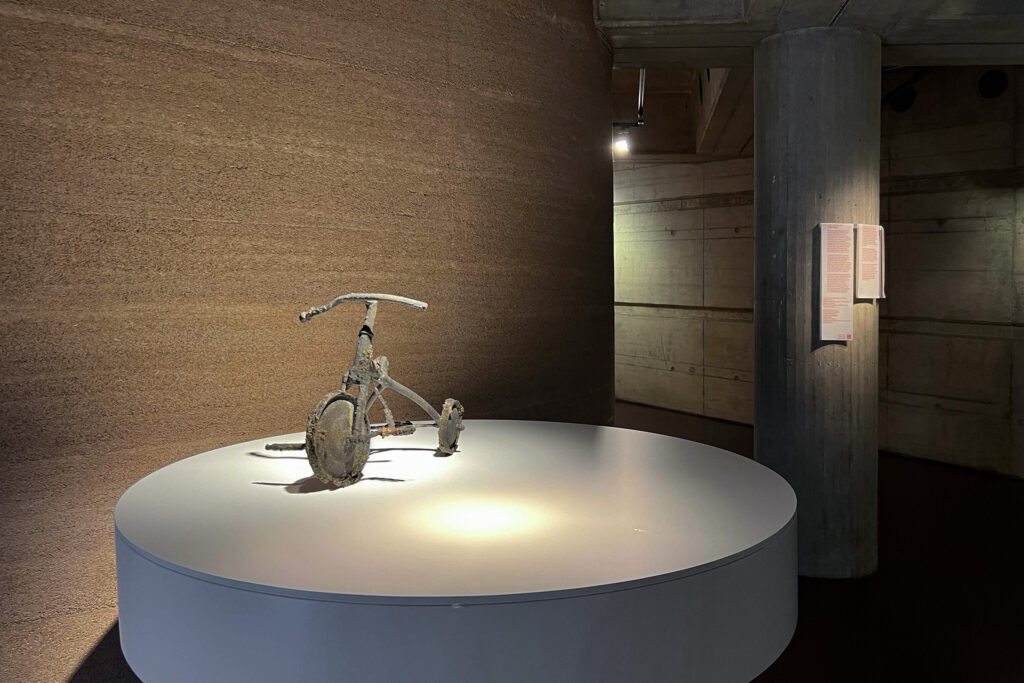
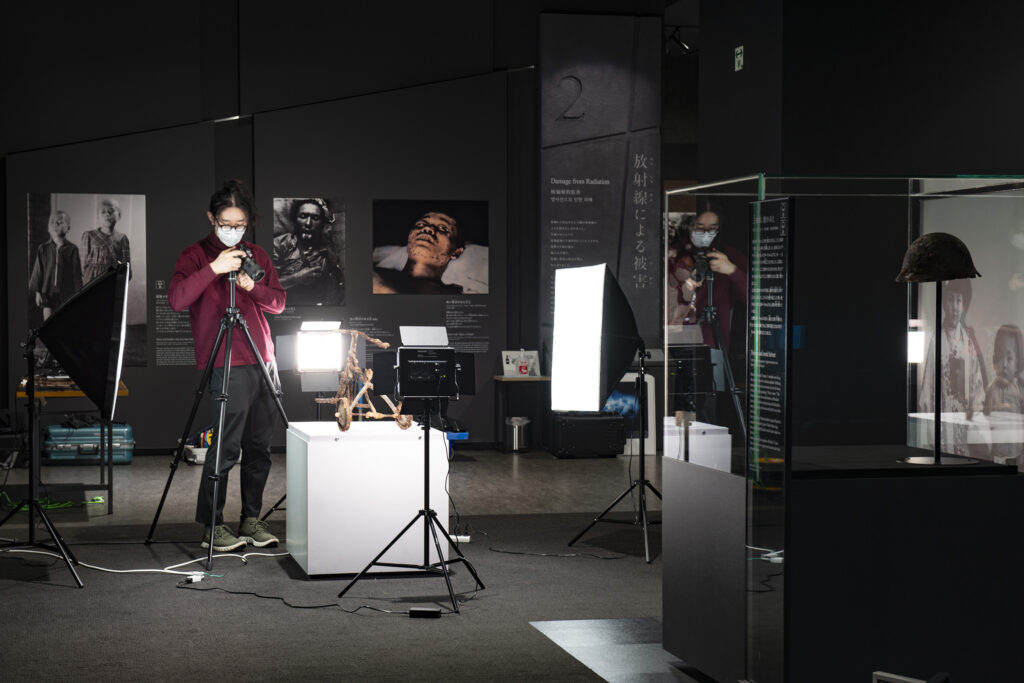
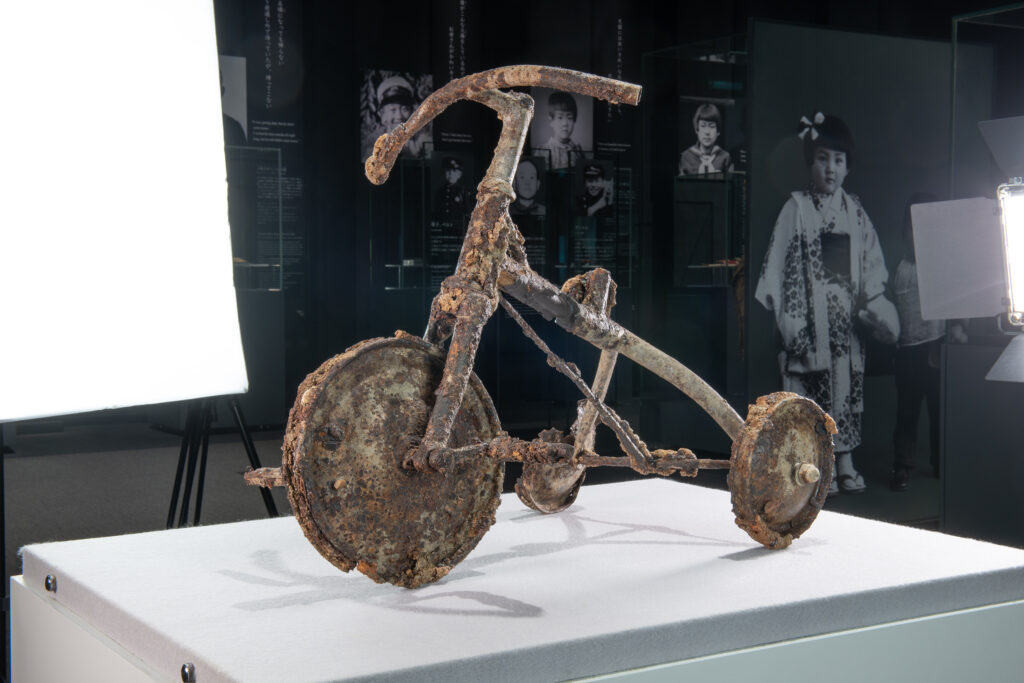
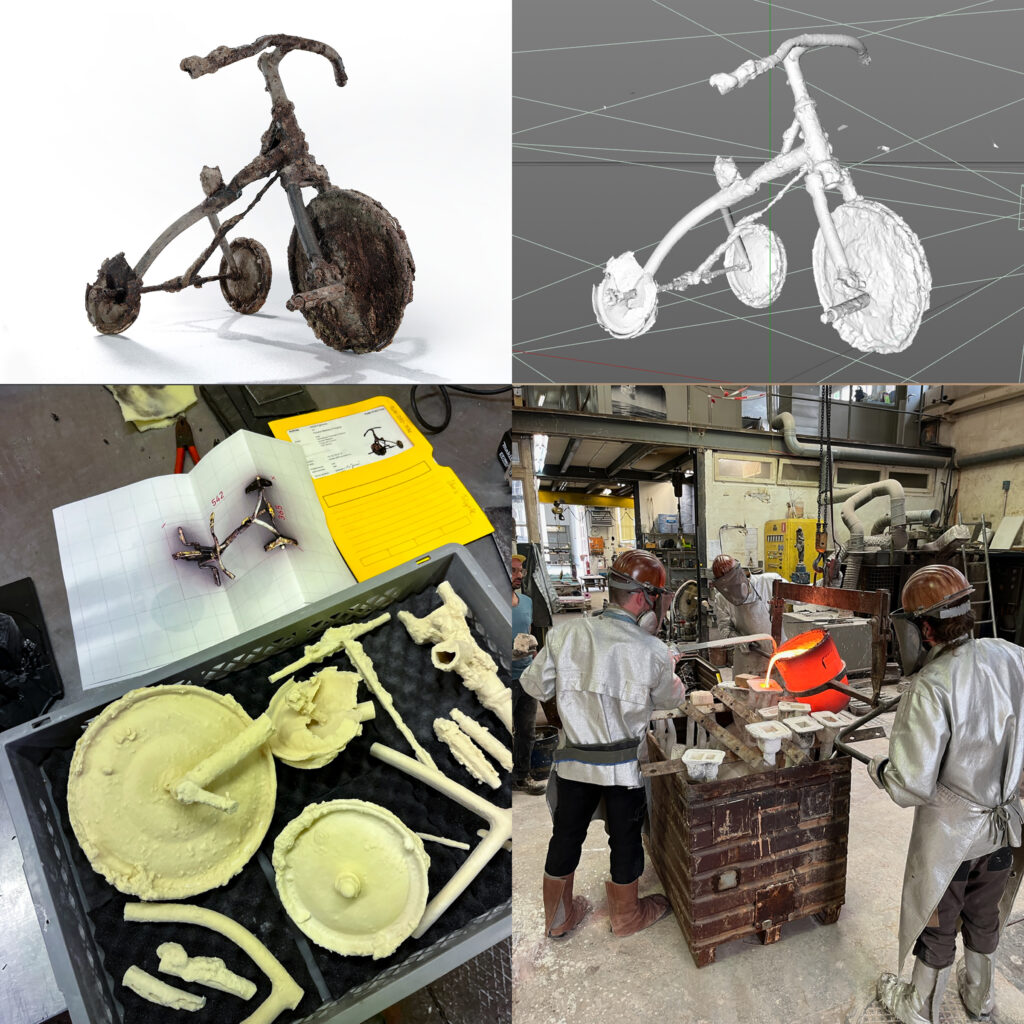
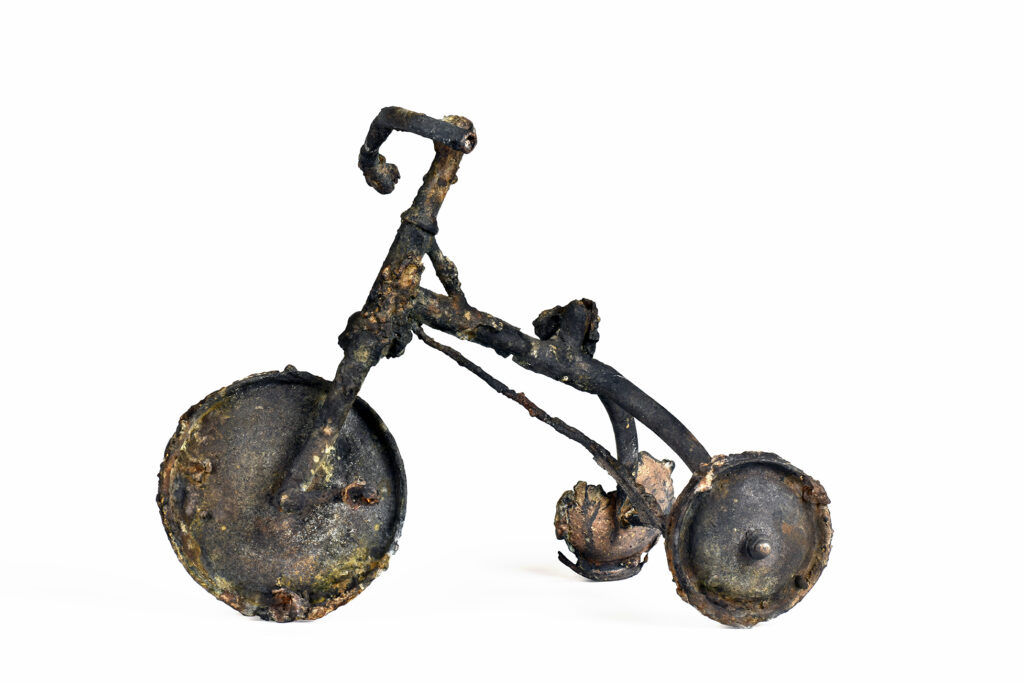
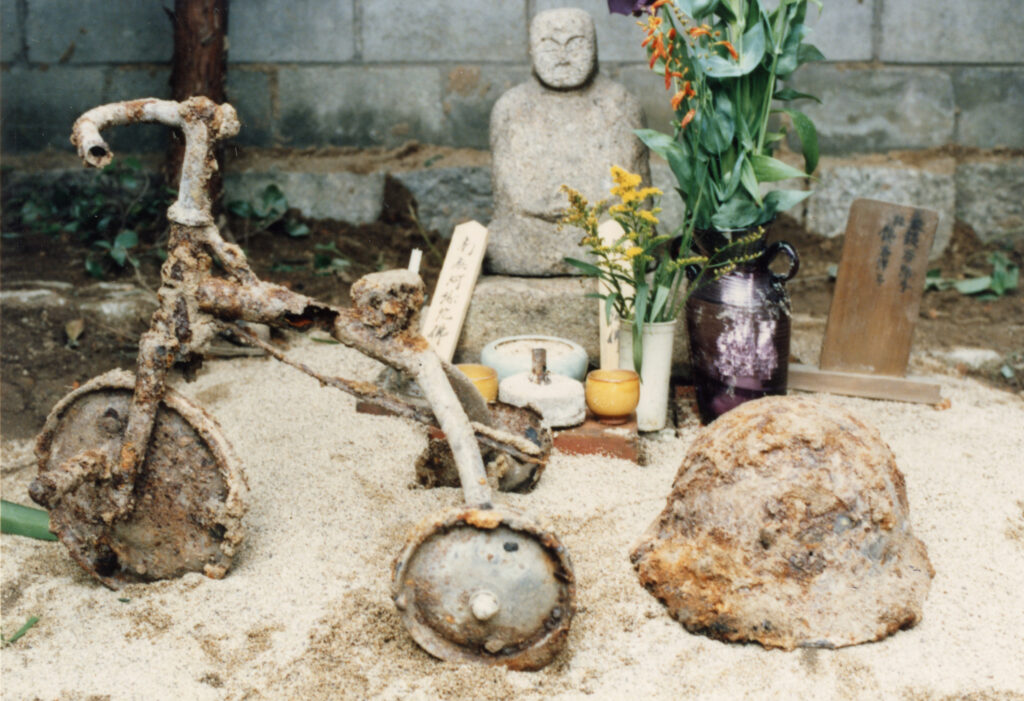
STORY
Future Memory – Tricycle, is a collaborative artwork, still life and sculpture by Akira Fujimoto and Cannon Hersey of one of the best-known artifacts on display at the Hiroshima Peace Memorial Museum known as Shin’s Tricycle.
Three-year-old Shinichi Tetsutani was riding his tricycle when the United States dropped an atomic bomb on Hiroshima on August 6th, 1945. Shinichi was found by his mother near his beloved tricycle suffering from severe burns and died that night, moaning, “Water, water….”
Shinichi’s two sisters had been trapped under their house and burned to death, so his parents could not face cremating him and decided to bury him with his tricycle in their garden. 40 years later, in 1985, they decided to move Shinichi’s remains to the family gravesite and donated the tricycle to the Hiroshima Peace Memorial Museum.
“This should never happen to children. Please work to create a peaceful world where children can play to their heart’s content.”
-Nobuo Tetsutani, Shinichi Tetsutani’s father
“Future Memory – Tricycle aspires to calcify an understanding of the atomic bomb survivor’s trauma and memorialize that trauma in an artwork for the time when no more survivors exist to tell the story for themselves and save us from the use of another atomic bomb as they have done for the past 79 years. My grandfather donated part of the proceeds from his Hiroshima article to the Red Cross so it is fitting for me to see my artwork in this museum.”
-Cannon Hersey, Artist
“The memories of radiation exposure have been preserved with storytelling, photographs and various ways. Future Memory offers a new experience through artworks with modern technology. We hope that people will continue to connect this experience to the future as their own memory.”
-Akira Fujimoto, Artist
“Behind every conflict, past or present, there are always personal and unique
stories that remind us of our shared humanity. The Hiroshima Tricycle is above all the story of a little boy, Shinichi, and his family. We are deeply grateful and honoured to be able to perpetuate his memory, with care and respect, through this exceptional sculpture, now permanently installed in the International Red Cross and Red Crescent Museum at the heart of Geneva, the world centre of humanitarian action and multilateral diplomacy.”
-Pascal Hufschmid, the International Red Cross and Red Crescent Museum’s Director General said
Future Memory – Tricycle by Hersey and Fujimoto from the Future Memory series was cast bronze at the Kunstgiesserei workshop in Switzerland, based on 3D data scanned with high resolution of Shinichi’s tricycle and made into an actual-sized sculpture. The sculpture was completed with a minimum of welding and supplementary processing, without painting to resemble the real thing. David Andermatt, a lead craftsmen at the workshop saw the hardened look of copper melted at 1,200 degrees Celsius, learned of our concept, and proposed to not add any finish but to leave it exactly as it came out of the extreme heat.
The artwork was commissioned by the Nobel Peace Prize-winning International Campaign to Abolish Nuclear Weapons (ICAN) and former director Beatrice Fihn in honor of the United Nations Treaty on the Prohibition of Nuclear Weapons (TPNW) and is on permanent display at the International Red Cross and Red Crescent Museum in Geneva, Switzerland.
「Future Memory – Tricycle」は「伸一ちゃんの三輪車」のレプリカを制作することが目的ではない。広島平和記念資料館で精巧にスキャンした3Dデータをもとに、スイスのKunstgiesserei工房で、実物サイズの鋳造ブロンズ彫刻として生み出された。本物に似せるためのペイントせず、最低限の溶接・補足加工のみで完成としている。これは1200℃で溶けた銅が固まった表情をみた工房の職人たちが、我々のコンセプトを知り提案してくれたものだった。
1945年8月6日8時15分米国が広島に原爆を投下。爆心地から 1.5kmの自宅の庭で三輪車に乗って遊んでいた3歳の銕谷伸一ちゃん。重度の火傷を負い「水、水…」とうめきながらその夜亡くなった。伸一ちゃんの姉と妹は崩壊した自宅の下敷きとなり焼死し、伸一ちゃんを火葬するに忍びなかった両親は自宅の庭に三輪車とともに埋葬し、その上にお堂を建て毎日祈りを捧げた。40年後1985年、親族が集まり伸一ちゃんの遺骨を家族の墓に移すことを決め、三輪車を広島平和記念資料館に寄贈、「伸一ちゃんの三輪車」として今日まで展示され、世界中の人々の記憶に深く残っている。 1998年に亡くなった伸一ちゃんの父、銕谷信男さんは「子どもたちにこのようなことがあってはならない。子どもたちが思いきり遊べる平和な世界をつくってください」と語っていた。
戦後に生まれた弟の銕谷伸次さんは、長年父親の背中を見つめていた。そしてこの語られることのなかった「記憶」をより世界中の多くの人に正しく伝えて欲しいと「Future Memory Tricycle」への協力を決意してくれた。我々は1945年原爆投下で沢山の犠牲者が出で悲惨であった、という事実を知るだけではなく、世代を超えて「記憶」は受け継がれ、更に新たな想いを乗せ我々に受け継がれていくこと知ったのである。そして「Future Memory – Tricycle」という作品とこれらの「記憶」を体験した人々に、また自分の想いを乗せ未来へと繋げて欲しいと願うのである。
CREDIT
Artist : Akira Fujimoto / Cannon Hersey
Technical Support : Kosuke Nagata
Production Management / Design : Yuichi Kodai
Production : Kunstgiesserei Art Foundry
Producer : Taku Nishimae, Mari Ishiko
Cooperation : Hiroshima Peace Memorial Museum
Supported : Chugoku Shimbun / 1Future
Organizer : ICAN (International Campaign to Abolish Nuclear Weapons)
Collection : International Red Cross and Red Crescent Museum

